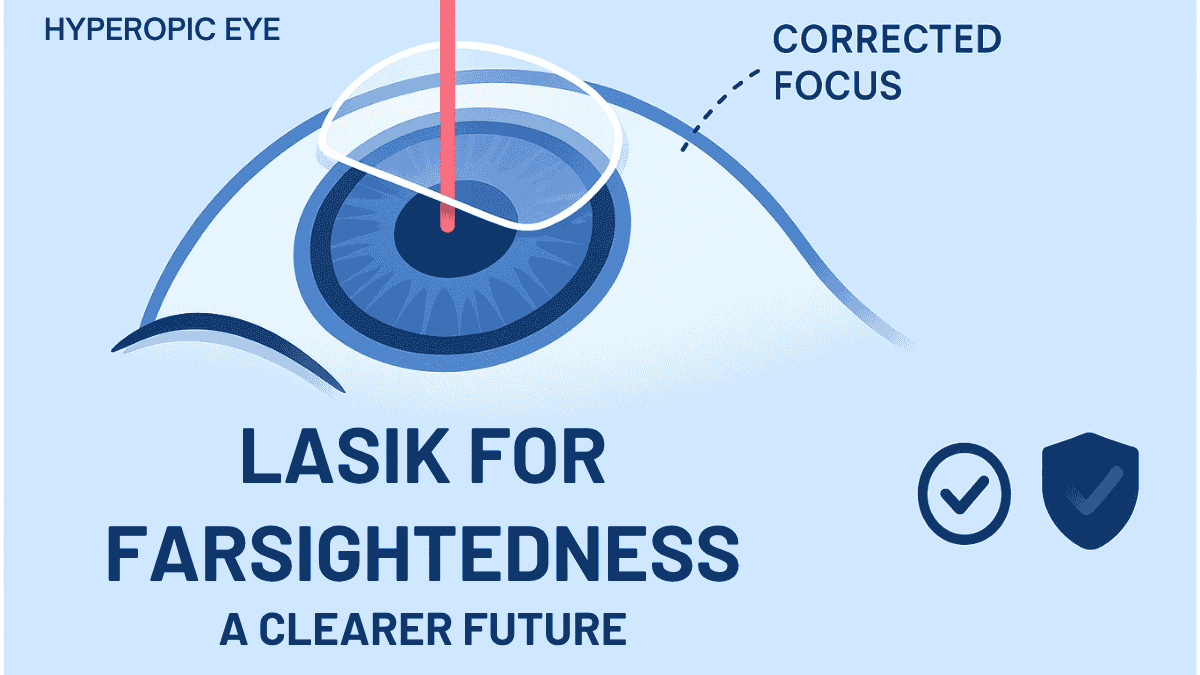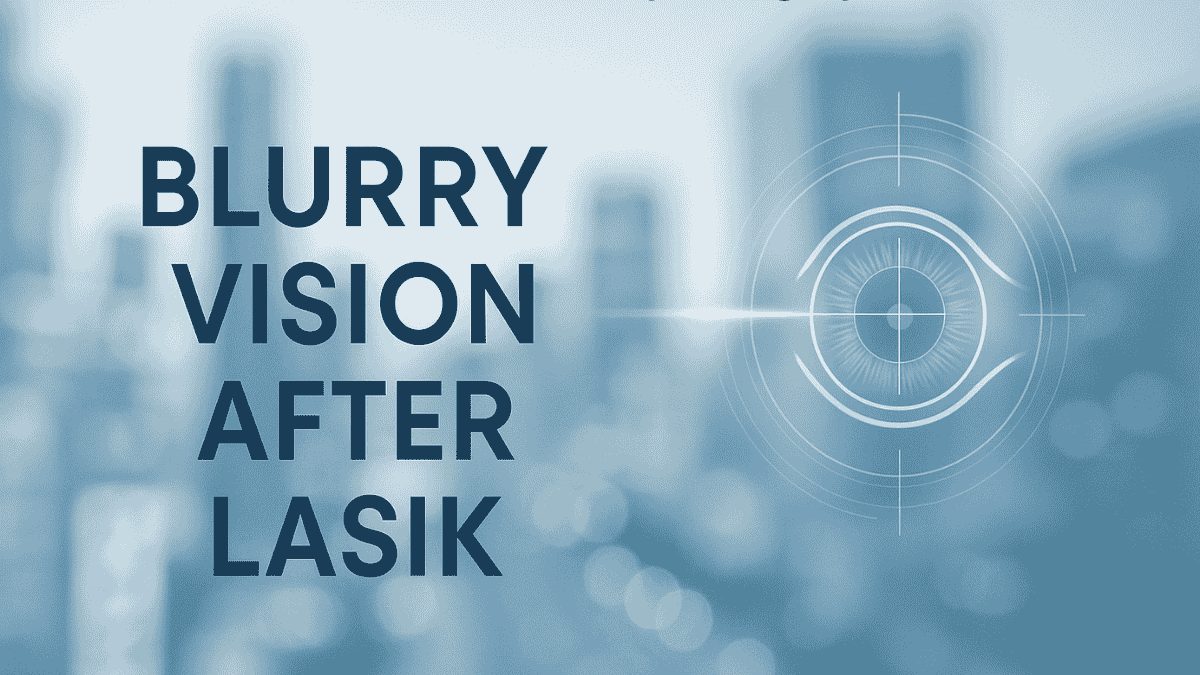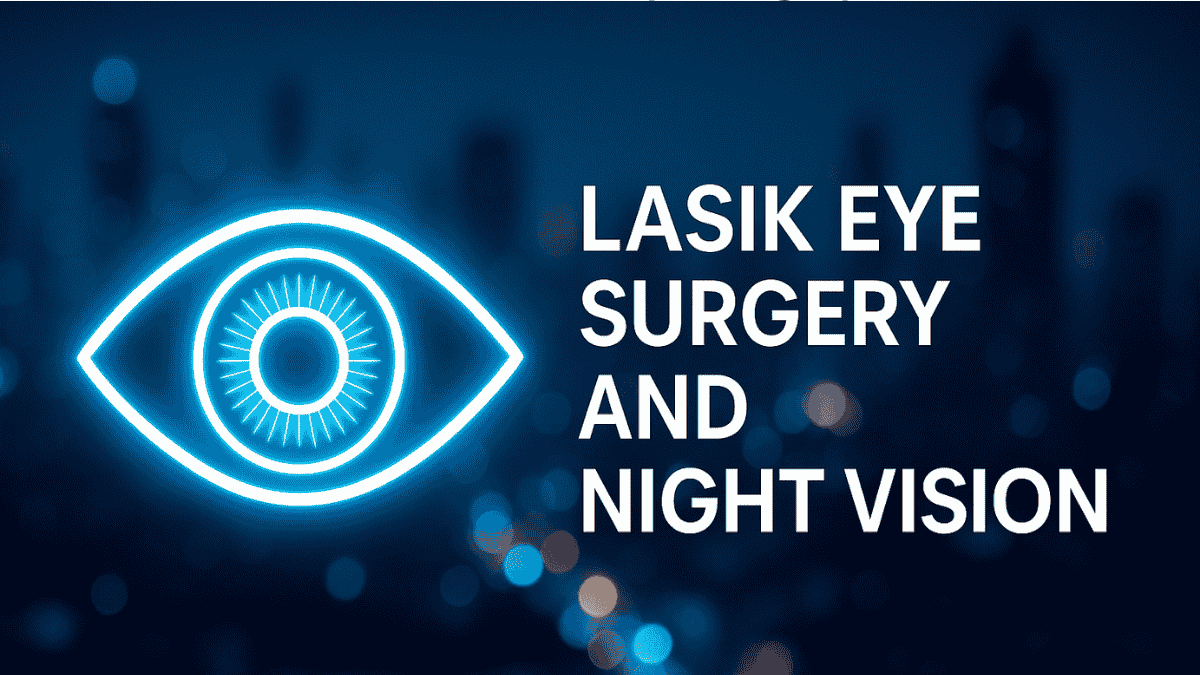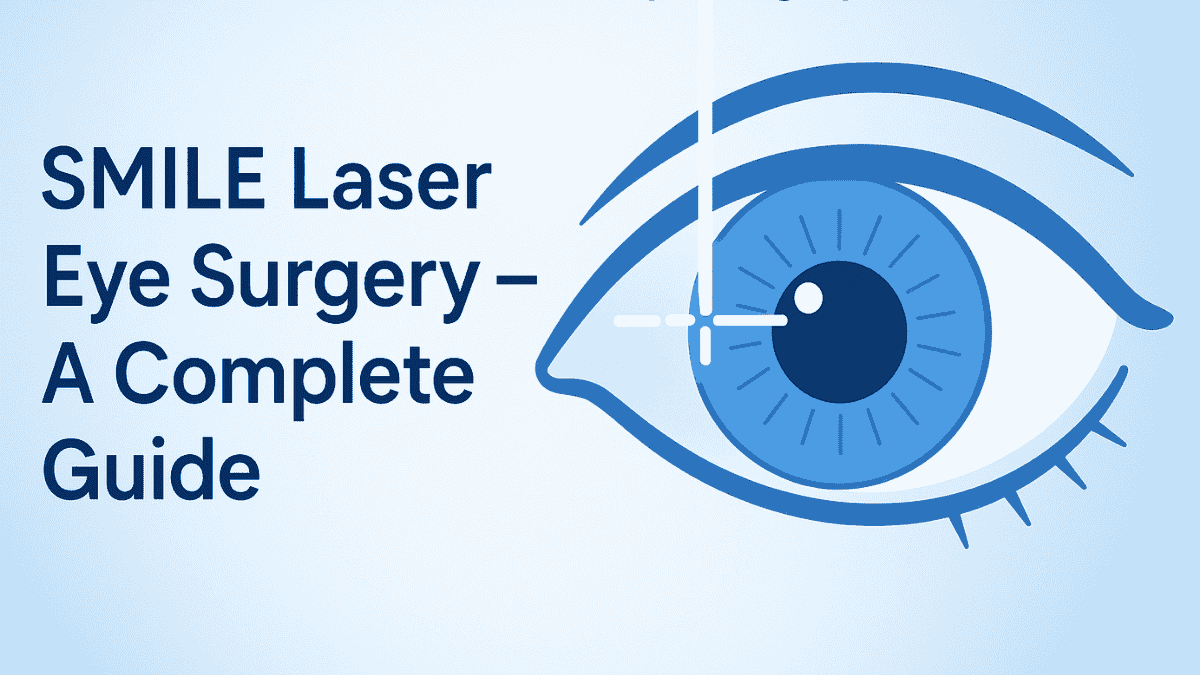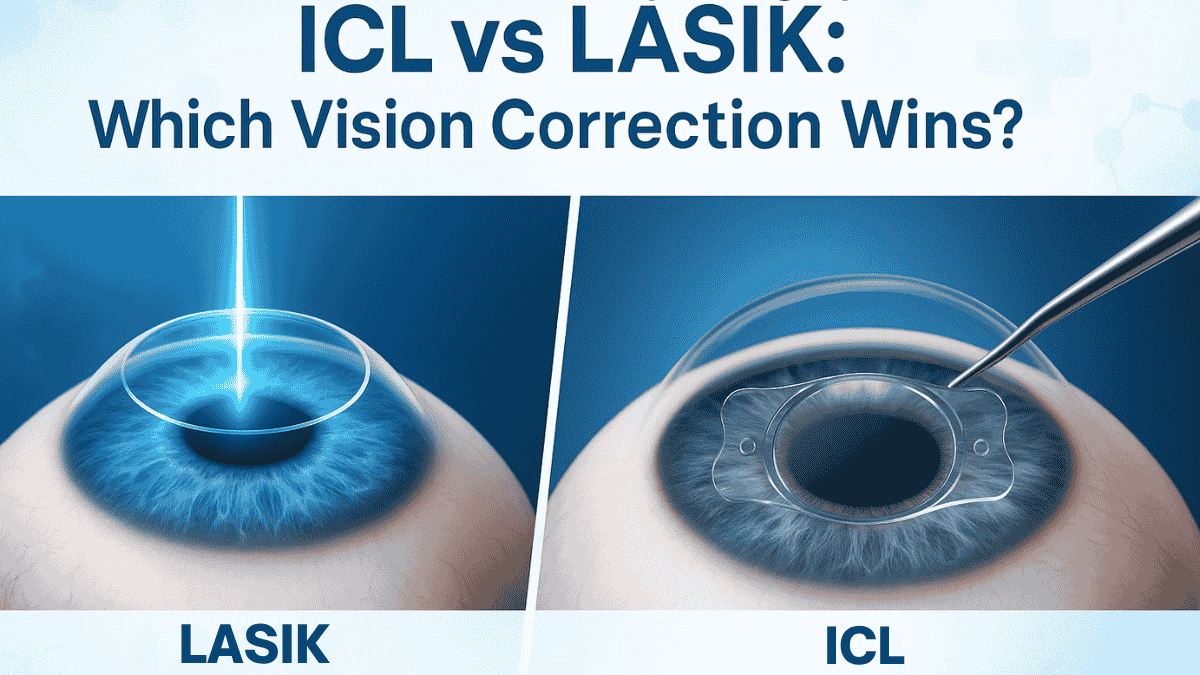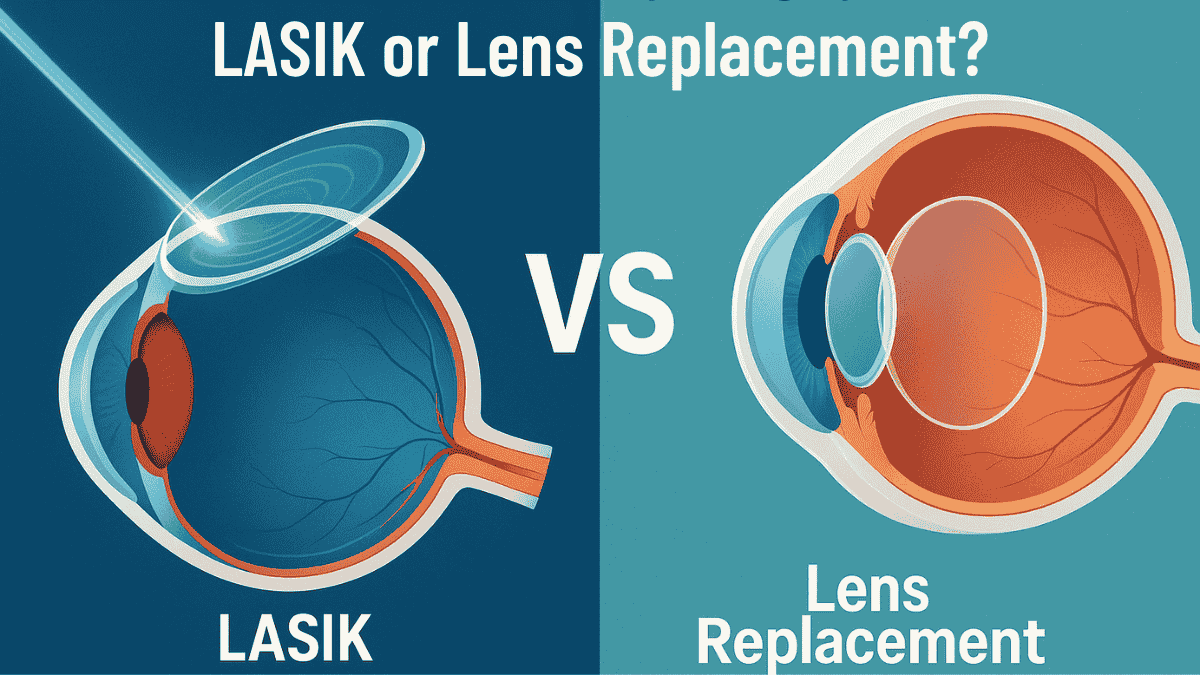
Thinking about improving your vision but not sure which path to take? You’re not alone. Many people ask themselves, “Why get LASIK instead of lens replacement surgery?” Both options can dramatically change how you see the world, but they work in very different ways.
LASIK reshapes your cornea, while lens replacement swaps out your eye’s natural lens. Each procedure has its own set of benefits and considerations. Your age, eye health, and lifestyle all play a role in determining which might be right for you.
Let’s break down the key differences between LASIK and lens replacement. We’ll explore why LASIK might be the better choice for some people, and when lens replacement could be the way to go.
Table of Contents
LASIK: A Quick Overview
LASIK stands for Laser-Assisted In Situ Keratomileusis. It’s a type of laser eye surgery that reshapes your cornea to correct vision problems. LASIK can help with nearsightedness, farsightedness, and astigmatism.
During LASIK, a surgeon creates a thin flap in your cornea. They then use a laser to reshape the corneal tissue underneath. This changes how light focuses on your retina, improving your vision.
LASIK is known for its quick recovery time. Many people see better within 24 hours of the procedure. It’s also generally less invasive than lens replacement surgery.
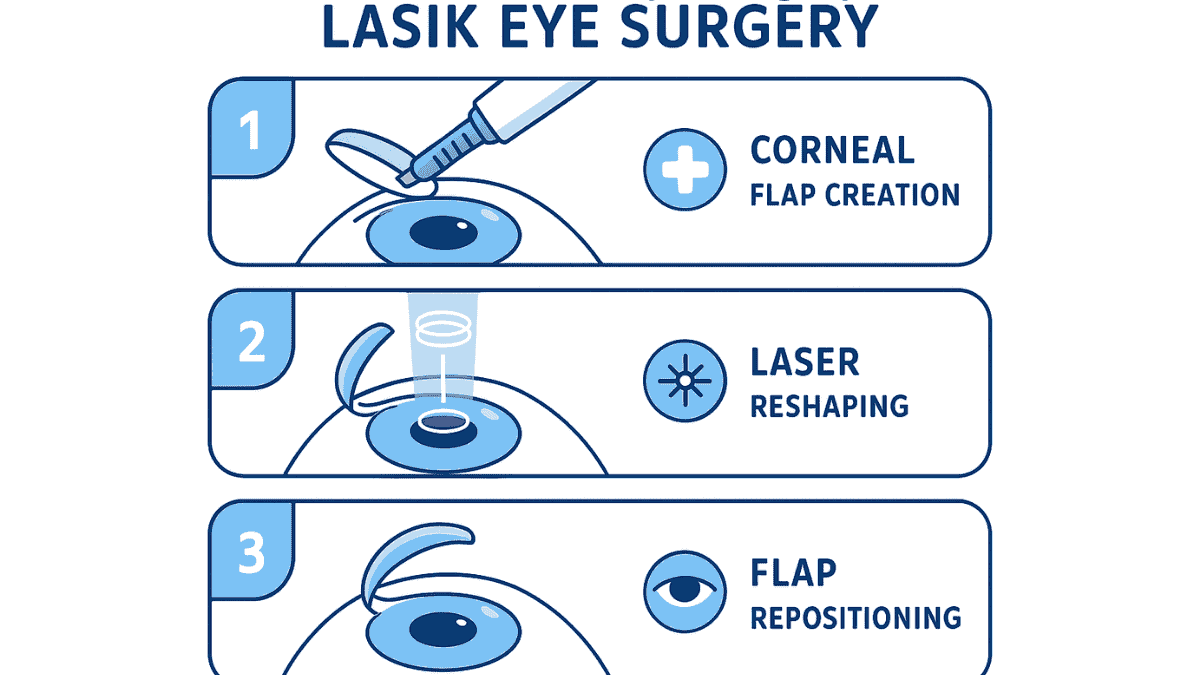
Related Article
LASIK: Quick OverviewLens Replacement: What You Need to Know
Lens replacement surgery, also called Refractive Lens Exchange (RLE), involves removing your eye’s natural lens. The surgeon replaces it with an artificial intraocular lens (IOL). This procedure can correct a wide range of vision problems, including presbyopia.
RLE is similar to cataract surgery, but it’s done before cataracts develop. It’s often recommended for people over 40 who are starting to experience age-related vision changes.
Recovery from lens replacement takes a bit longer than LASIK. Most people see improvement within a few days, but it can take several weeks to reach full visual clarity.
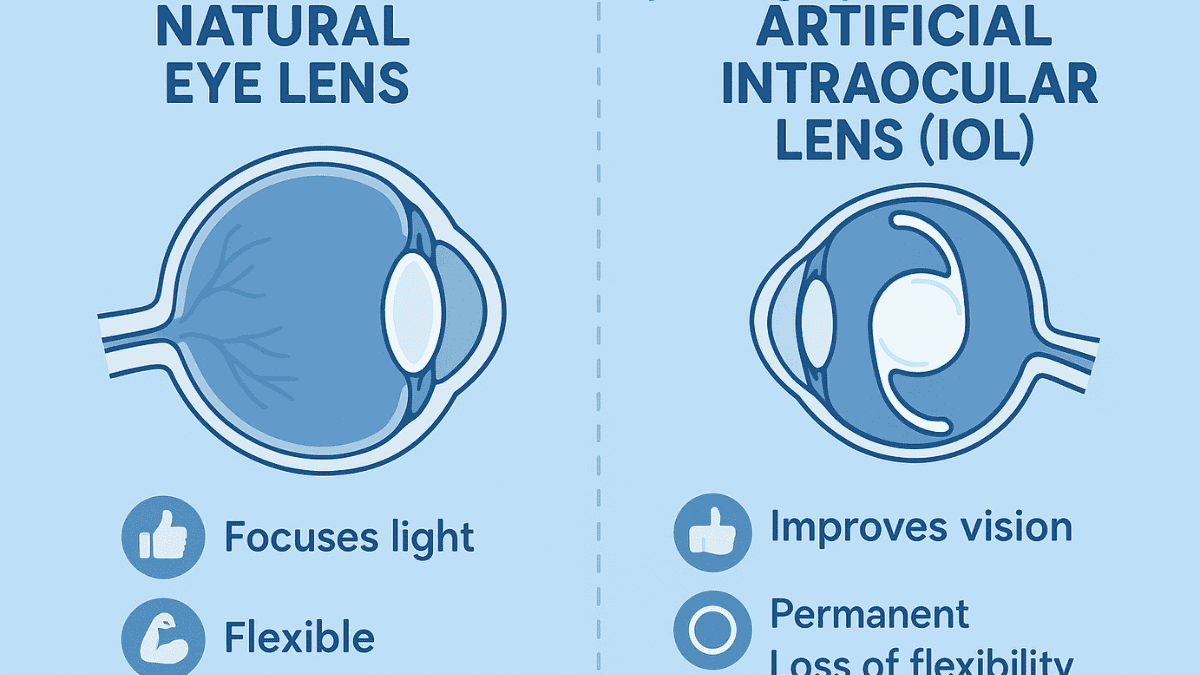
Related Article
ICL Surgery for High Prescription Eyes: What to ExpectWhy Get LASIK Instead of Lens Replacement Surgery?
Now, let’s dive into the reasons why someone might choose LASIK over lens replacement. There are several factors that can make LASIK a more attractive option for many people.
Age Considerations
LASIK is often the go-to choice for younger adults. If you’re in your 20s or 30s and have a stable prescription, LASIK could be ideal. Your natural lens is still flexible at this age, so you don’t need to worry about presbyopia yet.
Lens replacement is typically recommended for people over 40. That’s when the eye’s natural lens starts to lose its flexibility, leading to presbyopia. If you’re under 40 and don’t have other eye issues, LASIK might be the better choice.
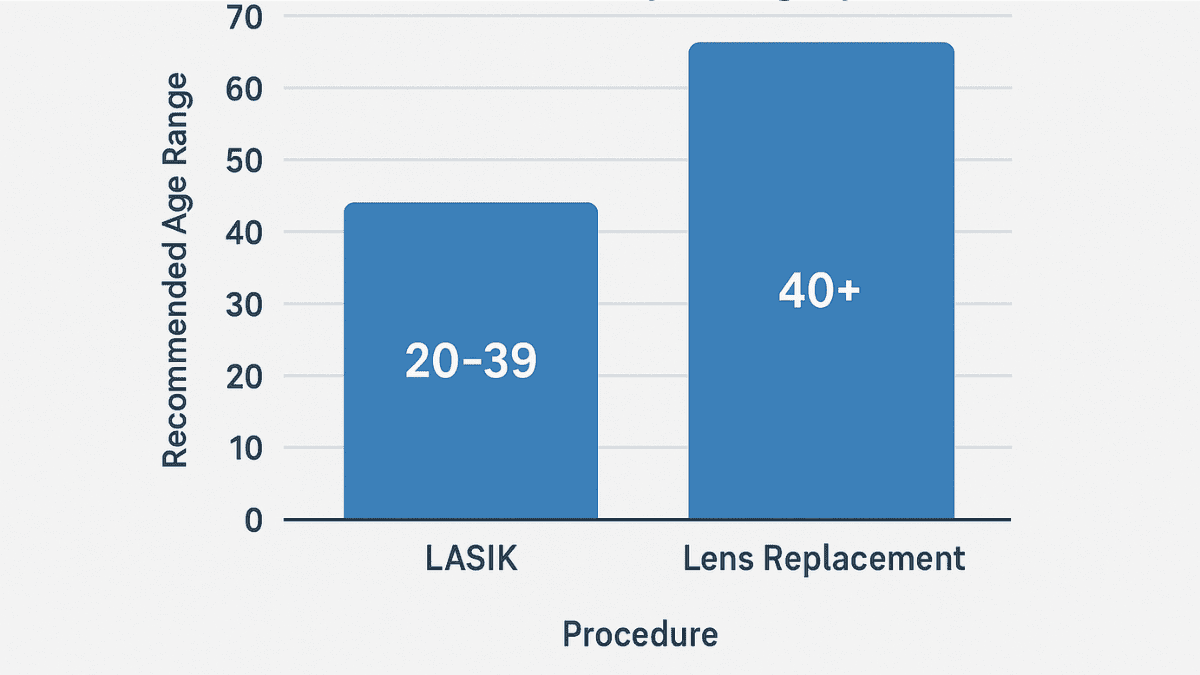
Related Article
Laser Eye Surgery Age Limits: What Parents Should KnowLess Invasive Procedure
LASIK is generally considered less invasive than lens replacement. It only involves reshaping the cornea, not replacing an internal part of the eye. This can make it a less daunting option for many people.
The idea of having your eye’s natural lens removed can be scary for some. LASIK might feel like a more comfortable choice if you’re nervous about eye surgery.
Quicker Recovery Time
One of the biggest perks of LASIK is its fast recovery time. Most people can return to work and normal activities within a day or two. Vision typically stabilizes within a few weeks.
Lens replacement surgery usually requires a longer recovery period. You might need to take more time off work and limit your activities for a few weeks. This can be a deciding factor for busy professionals or those who can’t afford extended downtime.
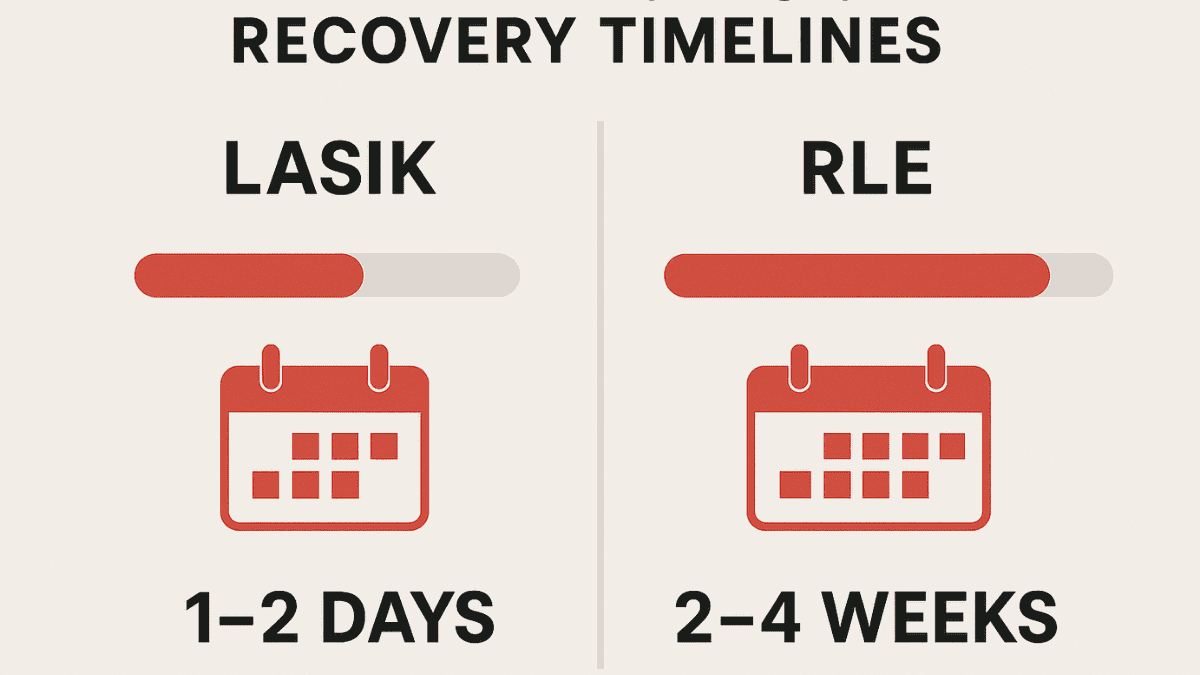
Related Article
What to Expect on the Before AND After LASIK Eye SurgeryRelated Article
LASIK Before And AfterCost Considerations
In many cases, LASIK is less expensive than lens replacement surgery. The exact cost can vary depending on your location and specific needs. However, LASIK is often the more budget-friendly option.
Insurance rarely covers either procedure fully, as they’re considered elective. But the lower cost of LASIK can make it more accessible for many people.
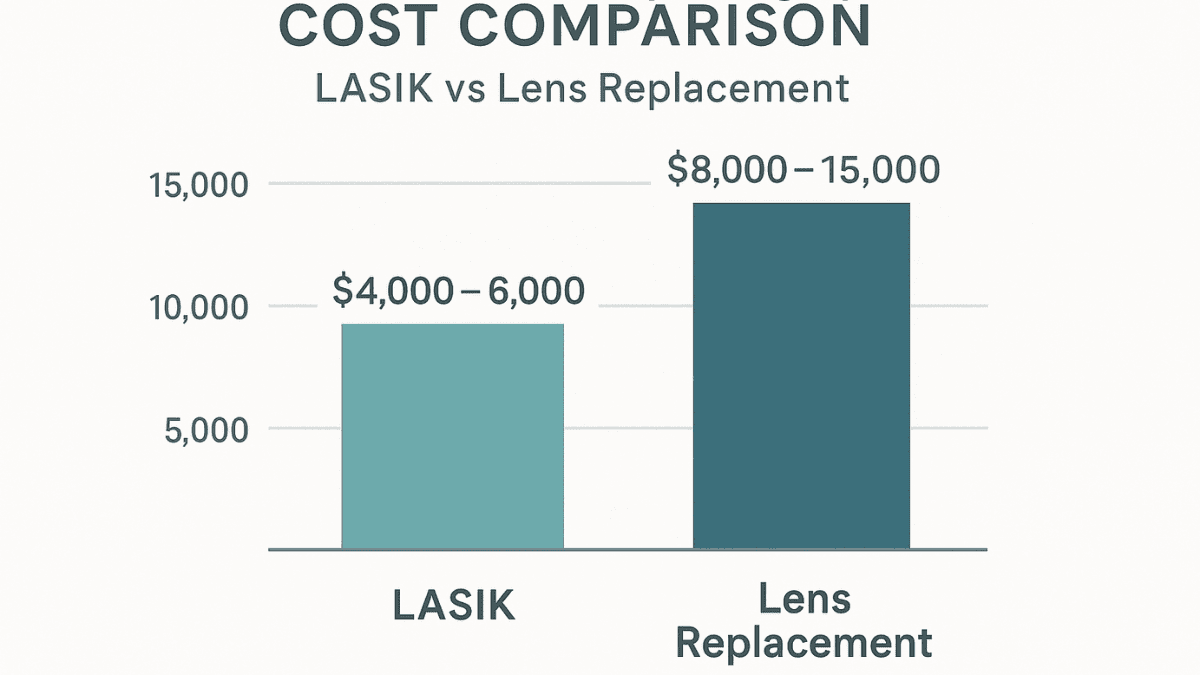
Preserving Natural Accommodation
If you’re under 40, your eyes can still naturally adjust focus between near and far objects. This ability is called accommodation. LASIK preserves this natural function of your eye.
Lens replacement, on the other hand, removes your eye’s natural lens. This means you lose the ability to accommodate. For younger patients, keeping this natural function can be a big advantage of LASIK.
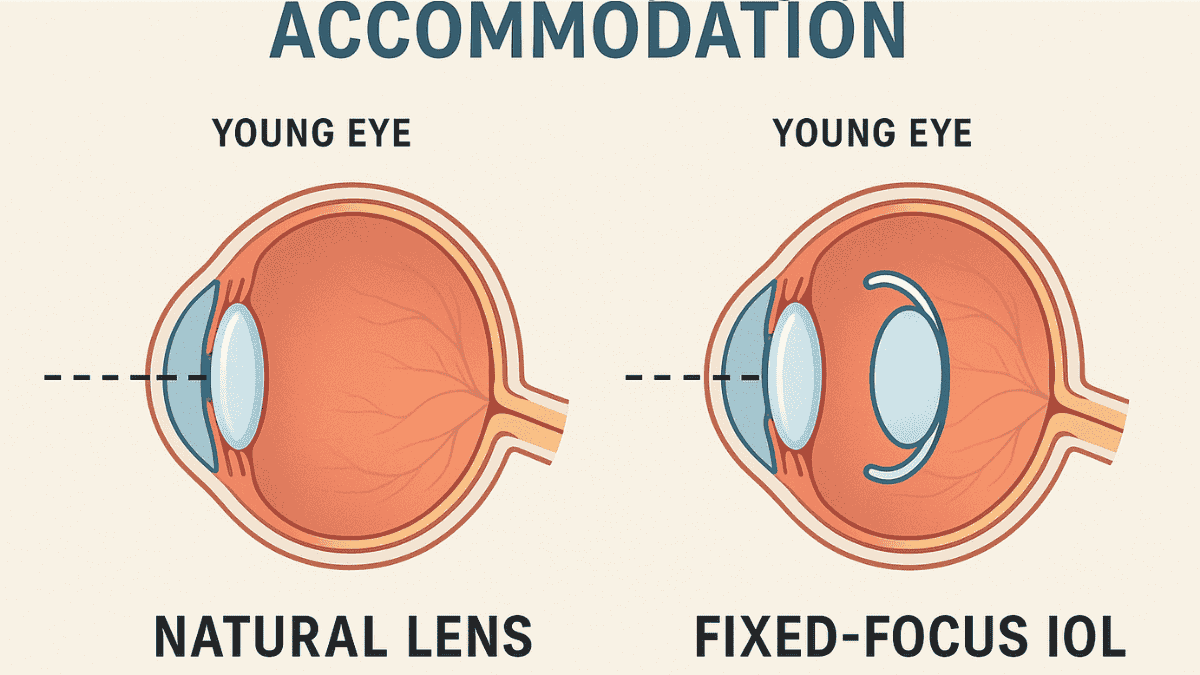
Related Article
LASIK at Age 50: Is It Still a Good Option?When Lens Replacement Might Be Better
While LASIK has many advantages, there are situations where lens replacement might be the better choice. Let’s look at when RLE could be the preferred option
Presbyopia Correction
If you’re over 40 and struggling with presbyopia, lens replacement might be more suitable. RLE can correct both distance vision and near vision with multifocal lenses. LASIK can’t directly address presbyopia.
For those tired of relying on reading glasses, RLE offers a more comprehensive solution. It can provide clear vision at all distances, something LASIK can’t achieve for presbyopic patients.
Very High Prescriptions
LASIK has limits on how much it can correct. If you have a very high prescription, lens replacement might be more effective. RLE can correct a wider range of refractive errors.
This is especially true for people with extreme farsightedness. LASIK might not be able to fully correct their vision, while RLE could provide better results.
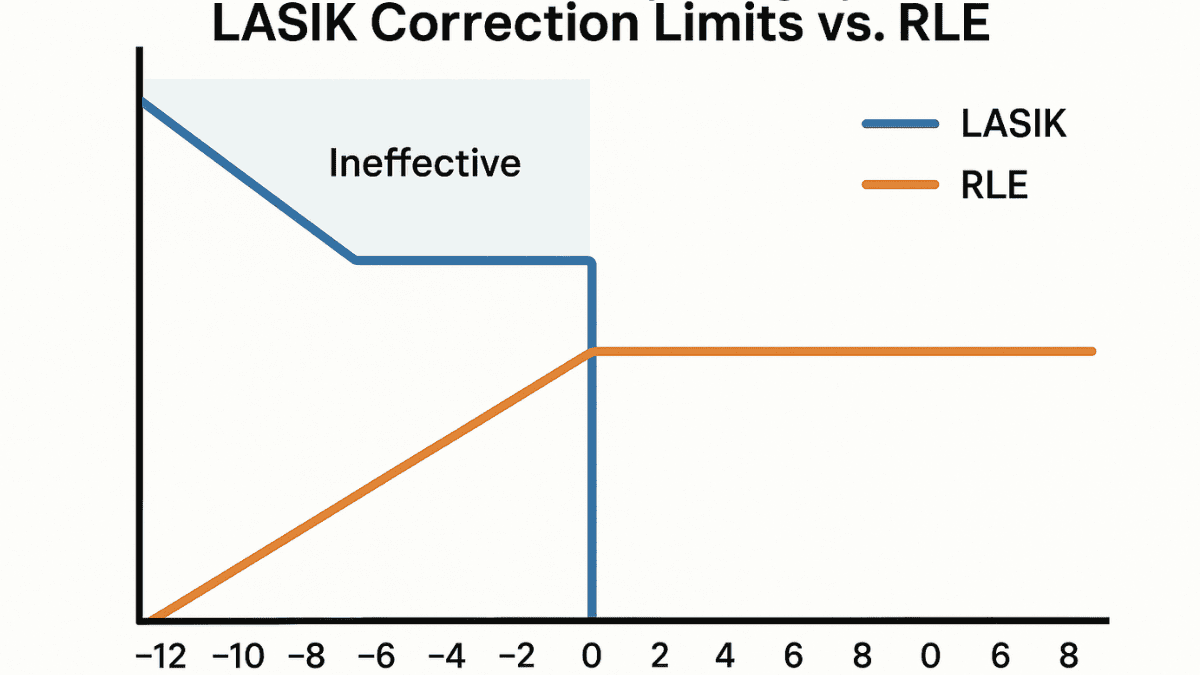
Thin Corneas
Not everyone is a good candidate for LASIK. If you have thin corneas, LASIK might not be safe or effective. In these cases, lens replacement could be a viable alternative.
RLE doesn’t involve reshaping the cornea, so corneal thickness isn’t an issue. This makes it a good option for those who can’t have LASIK due to corneal concerns.
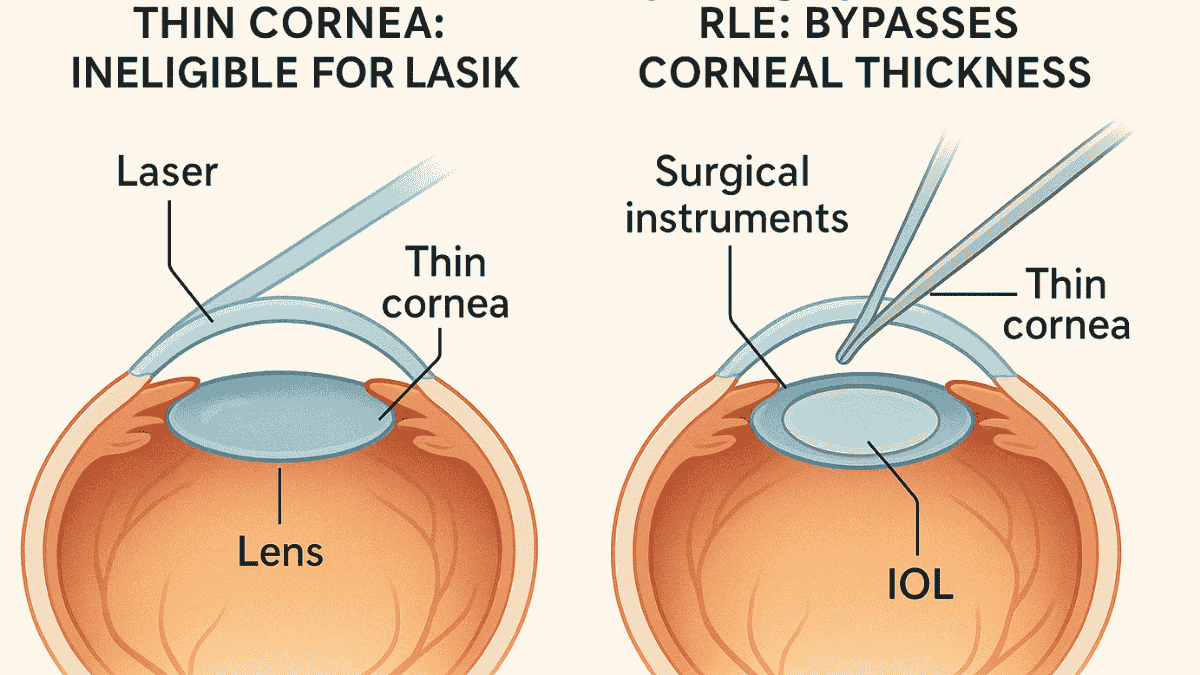
Related Article
Thin Cornea LASIK: OverviewCataracts or High Risk of Cataracts
If you’re starting to develop cataracts, or have a high risk of developing them, lens replacement might be the better choice. RLE can prevent the need for cataract surgery in the future.
LASIK doesn’t prevent or treat cataracts. If you get LASIK and later develop cataracts, you’d need another surgery. RLE takes care of both vision correction and future cataract prevention in one go.
Related Article
Is Laser Eye Surgery Worth It? Exploring the Benefits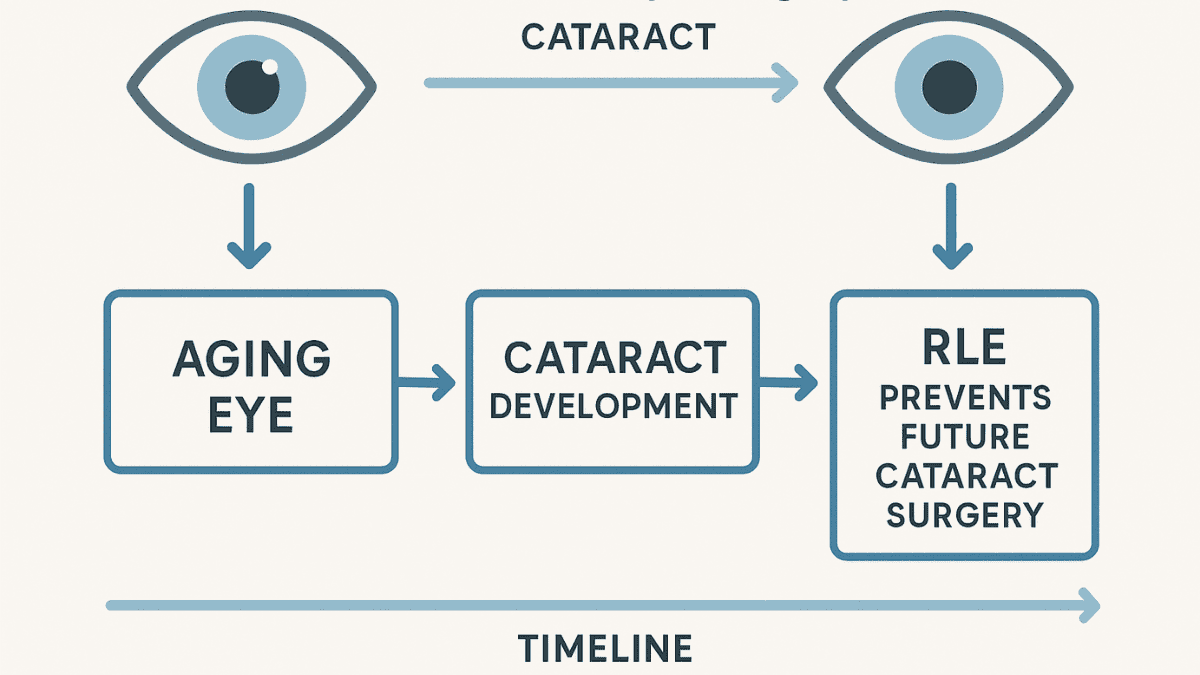
Making Your Decision: LASIK or Lens Replacement?
Choosing between LASIK and lens replacement is a personal decision. It depends on your age, eye health, lifestyle, and vision goals. Here are some key points to consider:
- If you’re under 40 with a stable prescription, LASIK might be your best bet.
- For those over 40 struggling with presbyopia, lens replacement could offer more comprehensive correction.
- LASIK generally has a quicker recovery time and is less invasive.
- Lens replacement might be better for very high prescriptions or if you have thin corneas.
- Consider your long-term vision needs, including the potential for cataracts in the future.
Remember, there’s no one-size-fits-all answer. The best choice for you depends on your unique situation. It’s crucial to have a thorough eye exam and discuss your options with an eye care professional.
They can assess your eyes, discuss your lifestyle needs, and help you understand the pros and cons of each procedure. With their guidance, you can make an informed decision about why you might get LASIK instead of lens replacement, or vice versa.
Related Article
What to Expect During a LASIK ConsultationConclusion
Understanding why someone would get LASIK instead of lens replacement comes down to individual factors. LASIK offers quick recovery, preserves natural eye functions, and is often more affordable. It’s great for younger adults with stable vision.
Lens replacement, while more invasive, can address a wider range of vision issues. It’s particularly beneficial for those over 40 dealing with presbyopia or at risk for cataracts. Both procedures have their place in vision correction.
The key is to work with an eye care professional to determine which option aligns best with your needs and goals. With the right choice, you can look forward to clearer vision and an improved quality of life.
FAQ
LASIK is less invasive, offers faster recovery, and preserves the eye’s natural ability to accommodate, making it ideal for younger patients with stable prescriptions.
Yes, LASIK is typically preferred for patients under 40 since their natural lens is still flexible, and they usually don’t have presbyopia.
LASIK reshapes the cornea without removing the natural lens, allowing the eye to continue adjusting focus between near and far objects.
LASIK only involves reshaping the cornea with a laser. It does not require removing or replacing internal eye structures like lens replacement does.
LASIK has a shorter recovery time, often allowing patients to resume normal activities within a day or two. Lens replacement typically requires a longer healing period.
In most cases, yes. LASIK tends to cost less than lens replacement, making it a more budget-friendly option for many patients.
The ideal candidates for LASIK are generally between 20 and 40 years old, especially if they have stable prescriptions and healthy eyes.
LASIK can correct distance vision and some refractive errors, but it does not correct presbyopia like lens replacement with multifocal lenses can.
LASIK is not suitable for individuals with thin corneas, unstable prescriptions, or certain eye conditions like severe dry eye or glaucoma.
Because lens replacement removes the natural lens, younger patients would lose their natural accommodation, which is still functional before age 40.
Yes, LASIK is best suited for individuals whose prescriptions have remained unchanged for at least one year and have healthy corneal structure.
No, LASIK doesn’t prevent cataracts. Lens replacement eliminates the natural lens, reducing the need for future cataract surgery.
Lens replacement may be more suitable for those with very high farsightedness, as LASIK has limitations in correcting extreme prescriptions.
Busy individuals or those who require quick recovery may prefer LASIK, while lens replacement may suit those looking for long-term correction including near vision.
Generally no. Thin corneas may not provide enough structural support for LASIK, making lens replacement a safer alternative in such cases.
Lens replacement is superior for treating presbyopia by using multifocal or accommodating lenses to improve both near and distance vision.
Most LASIK patients return to work within one or two days, depending on their healing response and job requirements.
Yes, LASIK permanently reshapes the cornea to correct vision. However, it does not prevent natural aging changes like presbyopia or cataracts.
You should consider your age, eye health, corneal thickness, prescription stability, lifestyle needs, and budget when evaluating LASIK.
Yes, both procedures require comprehensive eye evaluations to determine candidacy and create a customized surgical plan.


